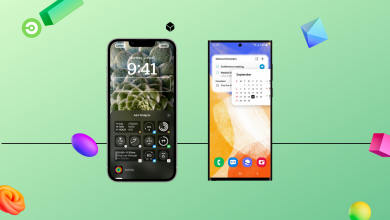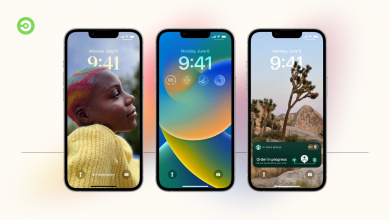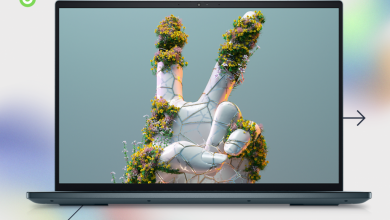Review of the second-generation Apple AirPods
Because of their outstanding noise cancellation and audio performance, the second generation of is currently the best noise-cancelling true wireless headphones available to customers of Apple products.
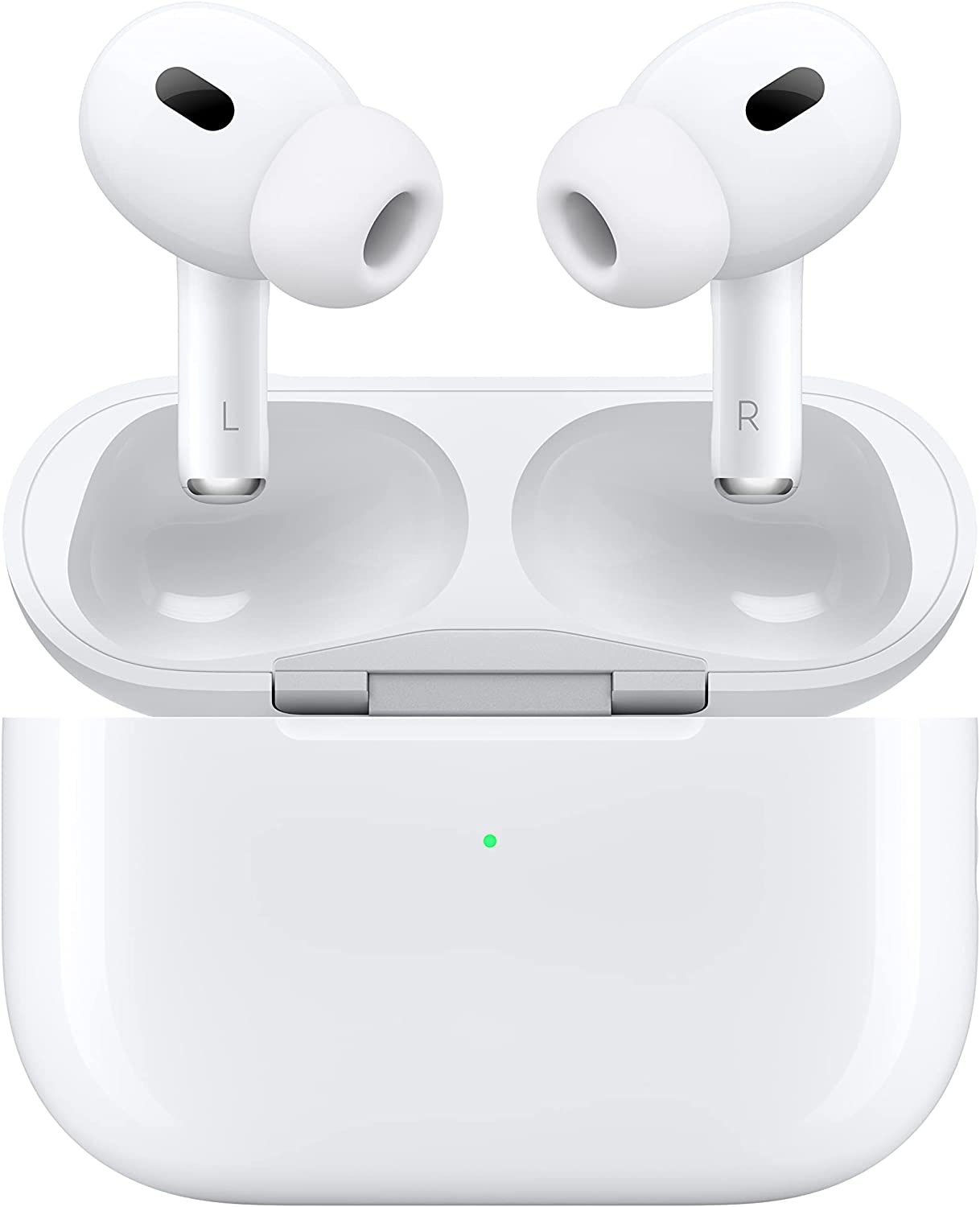
Contents
- 1 APPLE AIRPODS PRO (2ND GENERATION) SPECS
- 2 Design That’s Familiar, But With New Volume Controls
- 3 Integration of iOS in a Seamless Manner
- 4 Exceptional ANC
- 5 A Remarkable Example of Adaptive Transparency
- 6 The Concept of Personalization in Spatial Audio
- 7 Strong Audio Capabilities, Crystal-Clear Microphones
- 8 Earphones of the Highest Quality for Apple Customers
Apple AirPods Pro (2nd Generation)
✔ audio performance that is full and well-balanced
✔ Excellent active noise cancellation
✔ Adaptive Transparency mode is quite stunning in its own right.
✔ The charging case comes equipped with a convenient built-in speaker.
✔ Integration with Apple products that is completely painless
CONS
❌ No hi-res codec support
❌ Only fixed EQ settings are available for purchase and download.
APPLE AIRPODS PRO (2ND GENERATION) SPECS
| Type | In-Ear |
| Wireless | Yes |
| True Wireless | Yes |
| Connection Type | Bluetooth, Lightning |
| Water/Sweat-Resistant | Yes |
| Active Noise Cancellation | Yes |
The , now in their second generation, present a formidable challenge to the . Apple’s flagship noise-cancelling true wireless earphones come close to besting the $299 Bose model in the active noise cancellation (ANC) department, and they offer a much more sophisticated Transparency mode that lets you better hear your surroundings. Apple’s earphones cost $249, and the Bose model costs $299. In addition, the sound quality of the new AirPods Pro is just as outstanding as it has always been, and they come with an improved charging case that boasts an integrated speaker and a number of other handy features. It should come as no surprise that the AirPods Pro also provide totally seamless connectivity with Apple products. This makes it significantly simpler to use the AirPods Pro with your iPhone, iPad, or Mac than it is with any other pair of Bluetooth headphones. Therefore, even though the QuietComfort Earbuds II have a little advantage when it comes to noise cancellation, the are just as easy to suggest to owners of Apple devices, which is why they have earned our Editors’ Choice award.
Design That’s Familiar, But With New Volume Controls
At first appearance, the new AirPods Pro appear to be very similar to the previous generation of AirPods Pro. The case has some new features (which we will go over later), but it still has the familiar shape that it has always had. The earpieces and the cover continue Apple’s tradition of using a glossy, white plastic construction that is difficult to hold onto.
On the earpieces, the inside noise-cancelling microphone and the vent, which has been expanded, have been moved to slightly different positions. In addition, the tips of the ears appear to be somewhat more oval than they were in the past. The earpieces fit pretty firmly without the need for any additional accessories, and the box comes with four sets of eartips in varying diameters to accommodate a variety of ear canal sizes (a new XS tip joins the standard S, M, and L). Even though the overall fit is quite snug, the earpieces still have a lot of wiggle area for adjustment. Since even minute alterations in position can have an effect on the ANC, you should play about a little bit with how they are positioned in your ears.
The new H2 chip from Apple has nearly one billion more transistors than its predecessor, the H1 chip, making it roughly twice as powerful. This upgraded hardware results in improved power efficiency, an improved user experience that is less prone to instability, and an expanded set of ANC modes (including the new Adaptive Transparency mode). It is important to keep in mind that the ANC and Transparency modes perform all necessary processing locally on the earphones themselves.
Internally housed 11mm dynamic drivers are responsible for delivering a frequency range that Apple, much like Bose, chooses not to disclose to the general public. Only the lossy AAC and SBC codecs are supported by the Bluetooth 5.3-compliant AirPods; this implies that lossless audio from Apple Music or any other streaming service is not compatible with them. It would appear that Apple values consistency more than scalable codecs like LDAC, which is capable of high-resolution playback (including via Apple Music) in ideal situations but reduces the bitrate while playing in less than perfect environments. Apple has not yet provided any indication that it will support Bluetooth LE or the new SB3 codec.
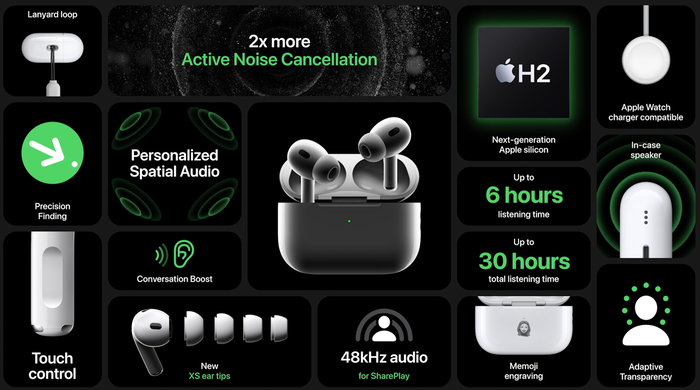
The good news regarding Bluetooth is that the immediately pair with your iPhone. An animated overlay appears on the screen, and, much as with earlier incarnations of AirPods, all you need to do to pair them is tap the screen once. You can even connect the earphones to many Apple devices at the same time and have them automatically switch between sources based on which device you are currently using. The function is helpful, but at times I find it frustrating because I don’t always want the source to transition to another nearby device without my approval. The function is convenient, but at times I find it annoying.
The on-ear controls continue to be operated by a combination of single presses and presses followed by holds. Simply press the stem of either earpiece to control playback and manage incoming calls. When you click the button twice, you move forward one track, and when you press it three times, you go back one track. When you successfully complete any of these actions, in-ear prompts will let you know that you’ve accomplished it. By default, an extended press and hold gesture on either earbud will toggle between the ANC mode and the Transparency mode. However, you have the option of also adding an ANC Off option to the cycle. You also have the option to switch either one or both of your ears to activate Siri when you use this command. One improvement that is really appreciated is the addition of a swiping action that can be used to adjust the volume level. After making a few adjustments, I had no problems using the volume gestures at all, despite the fact that my initial attempts to utilize them did not always register properly.
The IPX4 rating that this product has is nevertheless unimpressive, especially considering that several rival models, such as the Jabra Elite 7 Pro, which costs $199.99 less, boast totally waterproof ratings (IP57). To be fair, the majority of other pairs of noise-cancelling true wireless earbuds, such as the and the , also offer the same IPX4 rating as the AirPods. Simply said, we had high hopes that Apple, as a leader in the industry, would push the limits even farther. However, in their current state, the new are only able to endure a light misting and splashes coming from any direction. Because of this, you should not even consider immersing them in liquid or washing them with water from a tap.
However, we cannot help but tip our hats to Apple on one related front: the casing, including its inside, bears an IPX4 certification that is identical to that of the earpieces, which is an extremely rare occurrence. After a sweaty workout or a brief rain shower, either one ought to be OK to wear. However, when you dock the earpieces to charge them, we still advise you to make sure they are completely free of moisture.
Aside from that, the container has been updated with an U1 chip and an onboard speaker, both of which enable detecting functions when used together. The speaker, which can be identified by the three pinholes located to the right of the Lightning port on the bottom of the casing (the single pinhole located to the left of the port is not a microphone but rather an acoustic vent for the speaker), emits helpful chimes in a variety of situations. For example, if you place the case on a Qi charger but don’t correctly line it up, the case will emit a chime every few seconds until you correct its position. This will continue until the case is perfectly aligned. You can now use Apple’s Find My capability to track the location of the case (as well as each earbud) by configuring the case and the earbuds individually within the Find My app. You are then able to start an audio-based search for the case from that location; chimes will play from the speaker of the case until you turn them off using the Find My app. The use of audible chimes is another option for locating a misplaced earpiece.
Apple now gives you the ability to customize the front of the case with a greater variety of silly engravings than in the before. In addition to plain text, you have the option of adding emojis and even memojis. Apple Watch, MagSafe, and Qi chargers are all compatible with the case; however, you can also charge your device wirelessly with the Lightning-to-USB-C adapter that is included in the package.
Depending on how you use the new , Apple estimates that they will have a battery life of approximately five and a half hours (with ANC, Transparency mode, and Spatial audio with head tracking all turned on), six hours (with ANC and Transparency mode turned on), or seven hours (without any ANC, Transparency mode, or Spatial audio features turned on). In the same three situations, the case ought to supply an additional 22, 24, or 28 hours of charge, respectively. These are all estimations for the amount of time it takes to play back audio. When using the phone for calls, you can anticipate a battery life of 4.5 hours with ANC turned on, and an extra 18 hours when the phone is placed inside the case. Bear in mind that the actual results you obtain may vary from the estimations given, and that Apple’s calculations are based on the assumption that they will attain a volume level of 50%.
Integration of iOS in a Seamless Manner
As was previously established, the AirPods Pro are capable of fast pairing with an iPhone that is in close proximity. When you first open the case, an animated image appears that displays the remaining levels of battery power for both the earpieces and the case itself. Then, after inserting the AirPods into your ears, you will hear a chime that verifies the connection between the two devices. If for any reason the automatic pairing process does not function, you also have the option of manually pairing the earphones.
The AirPods Pro do not require a separate companion app because they are designed to work in tandem with iOS. Simply navigate to the settings menu on your phone and search for an icon directly below the space where your name is displayed. To access the many controls and options, tap this button.
Images of the and their case are displayed next to one another at the top of the section, along with the respective battery readouts for each item. The Name part can be found immediately below. The earphones will only display your name in this field by default; however, you are free to edit it to anything else you like. For example, I was able to rename mine so that it now refers to the scream emoji.
The Noise Control section can be found further down the page. In this section, you can choose between the Noise Cancellation, Off, and Transparency modes, but you are unable to make any precise adjustments to the settings. In the following section, you will be given the opportunity to assign a function to the press-and-hold gesture for each earpiece. If you select the Noise Control option, you will be given the choice of whether or not to add a “off” option within the selection cycle. You also have the option of programming this gesture to activate Siri. Due to the fact that each earpiece features its own separate controls, we are unsure as to why Apple did not simply default one earpiece to the Siri mode and the other to the Noise Control option.
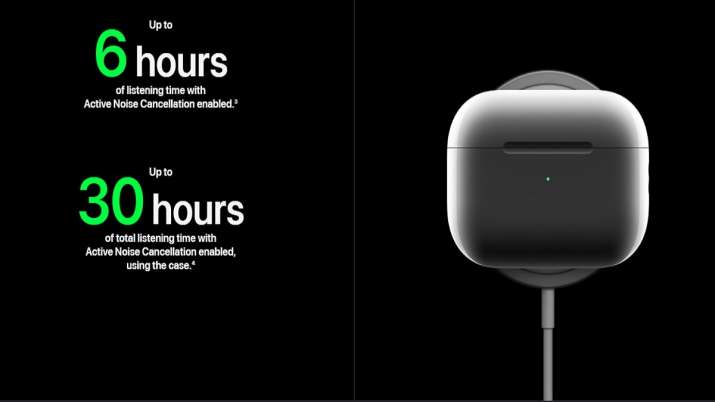
The Ear Tip Fit test will take place in the following section; to access it, continue pressing the screen until you see a play button. Pay attention to the warning that says “Do Not Remove AirPods,” which shows when you are listening to a short loop (about six seconds long). Following then, a notice that reads “Good Seal” will appear below each earpiece on the screen if everything went according to plan. If the test does not go well, a warning that reads “Adjust or Try a Different Ear Tip” will appear in yellow below the AirPod that caused the problem. It’s interesting because during one of the tests, while I was drumming my fingers loudly, I was given a warning that said “Noise Levels Too High for Ear Tip Fit Test.” Therefore, ensure that you do this test in a calm environment, and fight off any temptations you have to tap out a rhythm.
Moving down the menu, you will find the option to change the settings for Adaptive Transparency and Auto Ear detection. Adaptive Transparency is the default mode for Transparency and reduces the volume of strong noises while still allowing you to hear your surroundings. The following choice is referred to as Connect to This iPhone, and it is described as having the capability to “automatically transfer the audio path from linked devices to the AirPods when they are inserted in your ears.” You have the choice of leaving it at its default setting, which is “When Last Connected to this iPhone,” or selecting a different one.
The following part is the Spatial Audio one. You have the option to either begin the process of creating your Personalized Spatial Audio (which we will explain in further detail a little bit later) or view a demo of how the feature operates.
Continue to move down the menu until you reach the option to change the microphone to Automatic, Always Left, or Always Right. This will cause the microphone to automatically switch to the earbud that is currently in use if you are only wearing one earbud. Additionally, you have the option to toggle charging case sounds, a mode that optimizes battery charging, and the Find My Network function (which allows you to locate each AirPod on a map if you lose them).
The selections are completed by a tab labeled Accessibility. It provides extensive settings for how quickly controls respond, whether ANC works with only one earpiece in (it is turned off by default), whether Spatial audio monitors the location of your iPhone or the location of your head, tone volume adjustments, and even waits between volume swipe adjustments. Finally, there is an entire section devoted to audio accessibility called Headphone Accommodations. This section enables you to make adjustments to the audio’s brightness, allowing you to highlight voices or alter how soft noises are perceived by the user. Adjusting the audio balance, turning off headphone notifications, enabling LED flashes for alerts, switching to mono audio, and enabling background sounds (such as Rain or Dark Noise) to help you concentrate are all options that can be found in this section.
The Control Center on an iPhone also provides access to a few of the device’s more fundamental settings. For example, when an AirPods connection is active, the volume of the AirPods is controlled by a fader on the device. You may bring up a screen with a larger volume fader and options to turn on ANC (and then switch between ANC On, ANC Off, or Transparency modes) and Spatial audio by pressing and holding the fader (and then switch between Fixed, Head Tracking, or Off).
This level of integration is what puts other companion apps to shame, and it is one of the reasons why Apple device customers might be interested in purchasing AirPods. However, we do not have access to a programmable equalizer; the Music settings menu provides a variety of EQ presets, but none of them display EQ curves or can be adjusted.
After we had set up the hands-free Siri integration on an iPhone 14, it began to function in a reasonably short amount of time; nevertheless, the phone first attempted to transmit all replies over the phone’s built-in speaker, despite the fact that an active AirPods connection was present. The issue was resolved after the iPhone and the AirPods were both restarted. Take note that the always-on microphone for Siri can be turned off if you so want.
The , in addition to having a close working relationship with iOS, can also communicate with a variety of other Apple products and services. For instance, the Noise app that is available for use on the Apple Watch is able to display real-time noise measurements as well as noise reduction information. When you turn on the ANC, it immediately begins to detect the existing noise levels and then displays an estimate of the amount of decibel reduction they have achieved. Be aware that this is not an accurate measurement; rather, the watch draws its conclusions from the information collected by its mic and illustrates how the headphones should perform in the given setting. The Health app on the iPhone also retains the data that is transmitted by the AirPods. This app monitors your daily average listening levels and alerts you when you are getting dangerously close to exceeding your safe limit for noise exposure over the course of a week.
Exceptional ANC
You may find that the noise cancellation on the new AirPods Pro appears to be lacking at first, despite the fact that they provide great noise isolation. Just give it a few moments to load. To begin, the earphones will need to take a measurement of the ambient noise and then develop a personalized ANC profile that is suitable for the location in which you are now located. And then, once it begins to take effect, it is remarkable. In contrast to the , the ANC does not appear to produce any audible hiss when used in quiet environments. This is another point in the ANC’s favor.
Noise is reduced in various ways by each of the two models. The QuietComfort Earbuds will do a test as soon as you insert them into your ears, and after that, the ANC profile won’t alter very much. On the other hand, the new AirPods Pro make an audible adjustment right at the beginning, and then they make a second round of more subtle adjustments after that. Both sets of earbuds will adjust to any rapid changes in the ambient sound, but the adjustments made by the Bose headphones will typically be more subtle. The AirPods, much like a GPS that is recalculating its position, appear to devise a completely new strategy. You only get a fleeting glimpse of those modifications before the ANC resumes its normal, full-power operation.
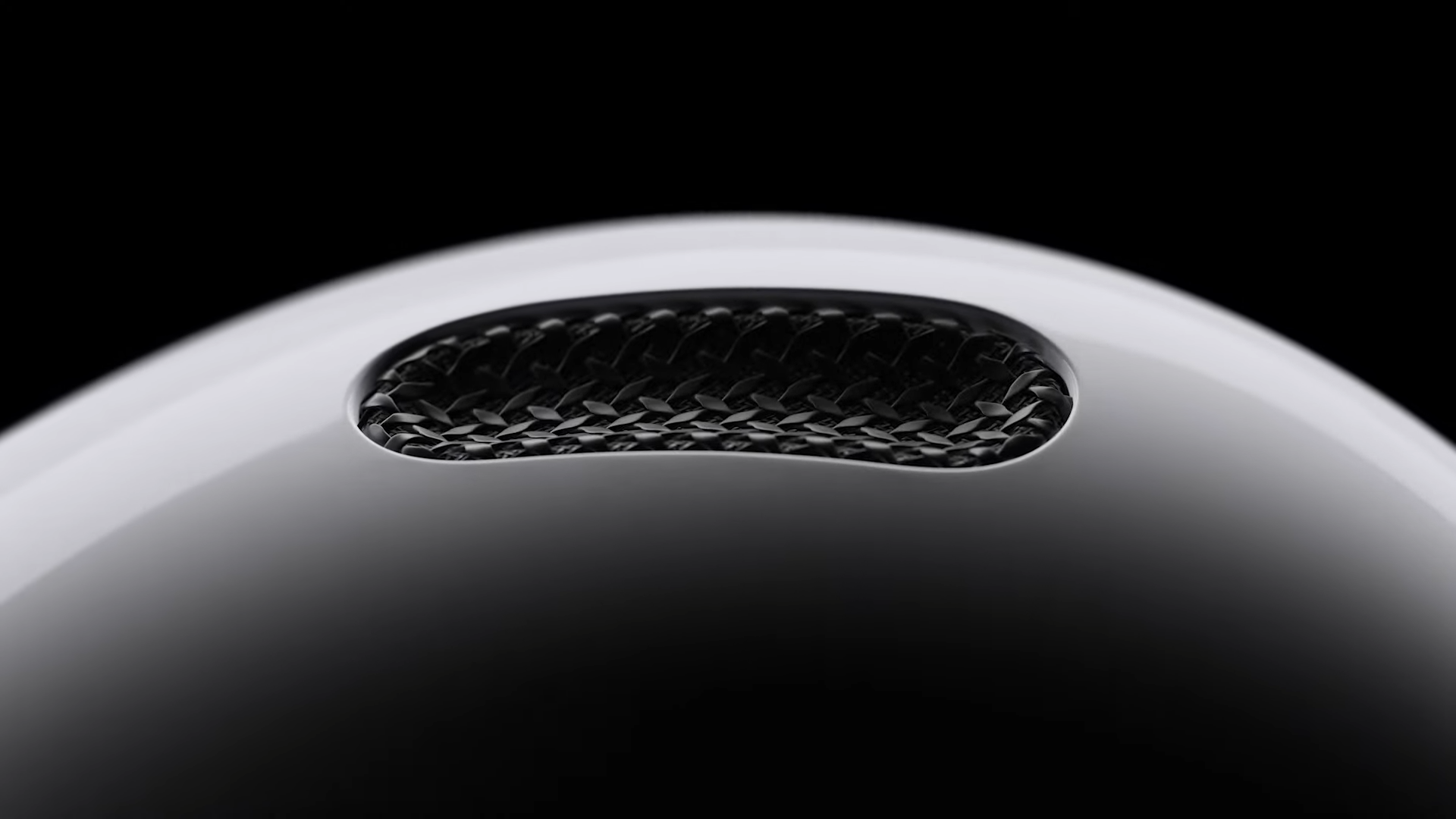
After some time spent getting used to them, the second generation of significantly reduced the intense low-frequency rumble that we previously experienced with the original model. It is impressive that the AirPods were able to match the performance of the QuietComfort Earbuds during some of our deep rumbling testing.
Even more impressive is the fact that the AirPods Pro performed better than the QuietComfort Earbuds in a number of different tests. The issue, if you want to call it that, is with the device’s consistency, which is also a problem that we encountered with the . The latter are likewise capable of astonishingly effective noise cancelling, albeit there are instances in which even a tiny shift of the head might compromise its performance. However, the final profile didn’t always live up to my expectations, despite the fact that the new AirPods Pro are more likely to maintain their effectiveness after the initial modification. However, to their credit, even a minor adjustment to the in-ear fit can result in a noise suppression profile that is significantly more effective. If the ANC isn’t particularly striking at first, you shouldn’t be afraid to experiment with different ways to position the earpieces in your ear.
This quality is most readily seen in conditions characterized by higher and more intricate frequency levels. However, compared to QuietComfort Earbuds, AirPods were able to noticeably lower the overall level of a recording made in a noisy restaurant with clinking dishes and rowdy discussion. Additionally, AirPods were able to let in less of a masking hiss overall. Both versions allow through a somewhat greater amount of hiss than the does at times, but they crank back a far greater amount of the bass and low-mid frequencies in the same situations.
In the end, I find that the have a very little edge when compared to the competition. In most cases, they are more effective in totally reducing deep low frequencies (by a small margin) while also working slightly better against noise at higher frequencies. But in general, I find their consistency to be superior. The adaptive method taken by the AirPods Pro can sometimes lead to better outcomes, but in order to have the greatest possible experience, you will need to cope with additional tweaks.
A Remarkable Example of Adaptive Transparency
During the event where Apple introduced its new , a video demonstration used jackhammers as an illustration of the kind of loud noise that would be distracting if it were played at full power while the user was monitoring their surroundings. However, another option is to wear the earbuds in such a way that they operate as active, semi-transparent earplugs while attending a concert. The adaptive mode turns down the volume in a thoughtful manner; it maintains the fundamental timbre and envelope of the audio while reducing anything that is over 85 dB back down to that level. As a result, you hear music in a manner that is generally equivalent to how you would hear it if you did not have them, and you prevent any potential damage to your hearing.
We put this mode through its paces by playing a number of Nirvana songs at extremely loud volumes—nearly on par with those of a live concert—in the testing room we use, which is equipped with a sizable subwoofer to deliver robust bass. When compared side by side, the traditional Transparency option and the Adaptive Transparency mode display a startlingly large gap between them in this circumstance. You can still feel the bass vibrations, and there is no discernible change in the timbre, which means that some of the effects of concert-level volumes are still audible, despite the fact that the peaks are substantially lower.

Apple’s implementation of this function sounds significantly more natural than the ActiveSense Aware implementation that Bose offers. The adjustment that the Bose Aware mode makes in response to loud sounds is extremely obvious, and at high decibel levels, it does not act significantly differently from the standard ANC mode.
When we played “Scentless Apprentice” via speakers that can approximate concert volumes, the ActiveSense setting on the Bose headphones was roughly comparable to pressing your fingers firmly into your ears in an effort to protect your hearing. In the meantime, Apple’s Adaptive Transparency mode keeps the sound’s concert-like dynamics intact.
Importantly, before you start shattering windows with your speakers, make sure that the Ear Tip Fit Test section displays a green light beneath each earphone in the part under “Ear Tip Fit Test.” We would be very interested in seeing some real-time decibel reduction statistics and the possibility to drop the threshold to a level lower than 85 dB in any future deployments. Nevertheless, this first iteration is fairly spectacular in its own right.
The Concept of Personalization in Spatial Audio
The most recent improvement that Apple has made to its Spatial audio feature takes the shape of individualized profiles. You can easily measure the geometry of your head, which effectively amounts to the form of your skull and ears, using the TrueDepth camera that’s included into iPhones. Following the encryption of the data, Apple will then compare it with approximately 1,000 already created profiles in order to produce the profile that is most suitable for you.
The examination is completed in a matter of moments at most. Imagine something that is a combination of taking selfies and having your fingerprint scanned, but for your face. After the front-facing camera has scanned a sufficient portion of your face, it does two separate measurements on your left and right ears. Because you can’t really see the screen that well when you hold the camera off to the side of your head, it can be a little uncomfortable to do so. However, this is not a major issue because your phone will notify you if it needs extra time to scan your ears.
If you notice very little to no difference in the way Spatial audio sounds after the test, it’s probable that you were already obtaining ideal performance; at least, that was the case for me. However, if your prior experiences with the Spatial audio experience left you feeling underwhelmed, Apple’s test will attempt to improve the sound localization in order to provide a more uniform impression for everyone. To be clear, the Spatial audio test is not something that is exclusive to the second generation of; rather, it is a capability that was introduced with iOS 16. It ought to operate adequately with the , the AirPods Pro from the first generation, and the . It is expected that dynamic head tracking and customised spatial audio will now function properly with FaceTime. In particular for group FaceTime chats, Apple wants to achieve a voice localisation that is more lifelike and gives the impression that it is there in front of you.
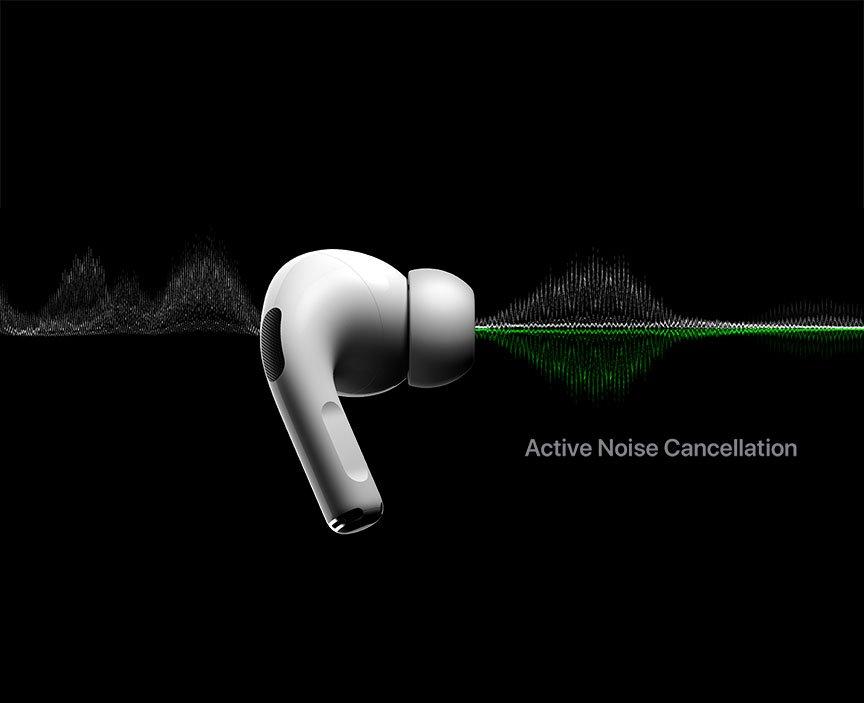
I continue to believe that using spatial audio for music and film audio is nothing more than a marketing gimmick. It could be entertaining to play around with every once in a while, but it’s not the best method to listen to most audio mixes. Spatial audio is not the same thing as surround sound and is not even close to being an approximation of it; rather, it is a sound localization effect that leverages the position of your sound source—such as an iPhone sitting on your desk—to mislead your ears into perceiving the sound come from there.
Turning around in a chair like one seen in an office is a simple technique to test out spatial audio: It sounds as if it is coming from behind you when your back is turned to your phone or predominantly via one ear when the other ear is closer to your phone. This is not the case with traditional earbuds, which keep the sound in the same place. Make it a goal to seek out music in which specific backing vocals or synthesized elements all have the impression that they are coming from a single ear. For instance, the new tune “Ovule” by Bjork has some dramatic voice and synth panning in it. If you enable spatial audio with head tracking, her voice—which is positioned perfectly in the middle of the mix—will follow your head motions as you turn your head, while the supporting sounds in your right ear will remain more or less in the same place as you move around.
To reiterate, spatial audio is a harmless and cool technique, but it is not yet a more pure or practical method to listen to music. If Apple has any intention of releasing a virtual reality headset in the future, the spatial audio feature that is included in the AirPods seems almost like a test run for what would be an essential feature for VR audio.
Strong Audio Capabilities, Crystal-Clear Microphones
A quick note on adaptive equalization: it works by measuring the dimensions of your ear canal in order to achieve the ideal level of audio balance. It is an integral component of the whole audio experience, and there is no way to turn it off. However, Apple does not present any evidence to demonstrate how it is helpful; so, we are required to simply take its word for it (along with a grain of salt).
Before we get any further into the specifics of the sound performance, it is important to reiterate how disappointed we are that there is no option to customize the EQ. Apple ought to provide the end user with the ability to change the bass, mids, and treble because doing so is not really difficult. The business aims for a sound signature that will appeal to the greatest number of people possible, which should make many people happy; however, you may still want to make some adjustments based on personal choice. Even Bose’s most recent earbuds come with a customized equalizer, although one with only three bands to choose from.
Notably, we did not find any discernible difference in the audio performance of the Adaptive Noise Cancellation (ANC) on, ANC off, Adaptive Transparency, and regular Transparency modes, with the exception of a brief adjustment period (lasting perhaps a second) that occurs when you switch between them. ANC remained the primary focus of our attention, but we did occasionally switch to other options.
The have an outstanding low-frequency response, as evidenced by songs like “Silent Shout” by The Knife, which have a significant amount of powerful sub-bass sound. Even at the highest volume levels, the bass does not distort, and even at moderate levels, the lows still sound full and strong. The digital signal processing (DSP) in the Apple ensures that the bass will continue to be full and rich even when the volume is turned down. This feature is also included in the QuietComfort Earbuds.
The sound signature can be heard more clearly on “Drover” by Bill Callahan, which is a track that has a lot less deep bass in the mix. The drums on this track might use a little more stomp, but other than that, the lows come over as fairly genuine overall. Baritone vocals performed by Callahan have a pleasing blend of low-mid richness and high-mid sharpness, while higher-register percussive beats and acoustic strums sound bright and real. In the end, the sound is sculpted a little bit by the AirPods Pros, but not to an extent that is artificial. Because there is no EQ, you have no choice but to rely on the presets if you want to place more of an emphasis on the bass depth, the mids, or the voices.
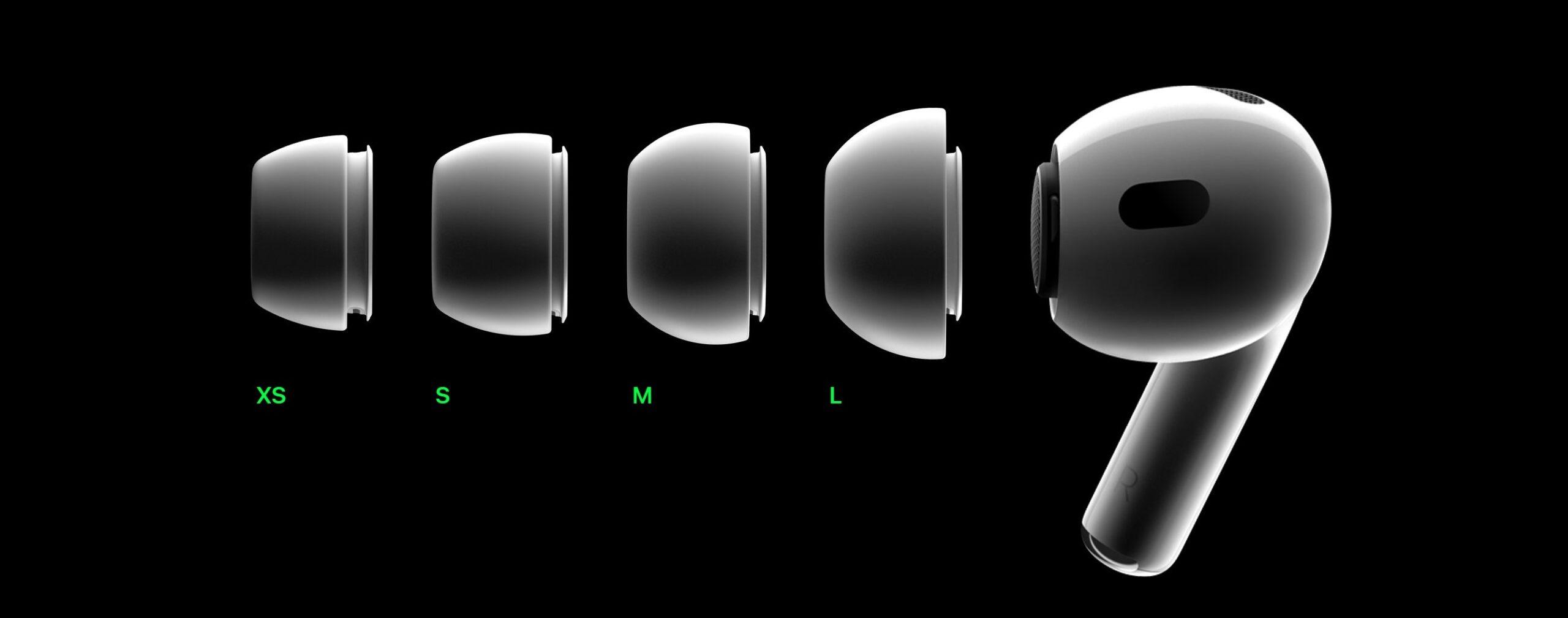
The track “No Church in the Wild,” which was produced by Jay-Z and Kanye West, features a kick drum loop that has a high-mid presence that is sufficient for its attack to keep its power, while the background vinyl crackle and hiss moves forward. Once again, this treatment reveals a significant amount of sculpting in the higher frequencies. The loop also receives some additional thump in the lows, which is what we notice more than the attack in the high-mid range, and the sub-bass synth hits that punctuate the beat sound full-bodied and powerful. Although the vocals on this track come across with a high level of clarity, there is a trace of added sibilance that may be heard.
It’s possible that purists won’t appreciate how orchestral tracks, like the opening scene from John Adams’ The Gospel According to the Other Mary, are given a treatment that emphasizes bass and is very rich sonically. The vocals, higher-register brass, and strings all come across as bright and clear, whereas the lower-register instrumentation is a little more audible in the mix than it would normally be (even if it never threatens to overwhelm the other frequencies).
In general, the 11mm drivers in the AirPods Pro deliver a rich and crisp audio experience; however, if you prefer fuller bass, you may find that the QuietComfort Earbuds are more to your liking because those earphones produce a deeper but still relatively natural low-end response. The AirPods Pro’s 11mm drivers also deliver a rich and crisp audio experience. However, there is a discernible difference in the bass response between the two, and it has less to do with the characteristics of the drivers themselves and more to do with how Bose tunes its headphones.
The beam-forming mic array found on the AirPods Pro performs really well. A test recording made on an iPhone was played back to us, and we had no trouble comprehending what was being said. Apple makes adjustments to the signal in order to achieve maximum clarity, which results in voices that are audible (albeit a bit unnatural).
Earphones of the Highest Quality for Apple Customers
On paper, the second generation may appear to be an improvement of only a minor kind; nevertheless, this is not the case in practice. Although the audio performance of the new model is comparable to that of the older model, the new pair features noise cancellation and transparency settings that are far more effective. The addition of new volume controls and a charging case that is less likely to be misplaced are both excellent improvements. When compared to the , the active noise cancellation on these headphones is just marginally less effective all around, and the audio performance is on par with that of the Bose headphones. In the end, the AirPods Pro are more than excellent enough to earn our Editors’ Choice prize for owners of Apple devices who demand a flawless software experience and highly effective noise cancellation. This award was given to the AirPods Pro.
Conclusion: So above is the Review of the second-generation Apple AirPods article. Hopefully with this article you can help you in life, always follow and read our good articles on the website: Peto.info

